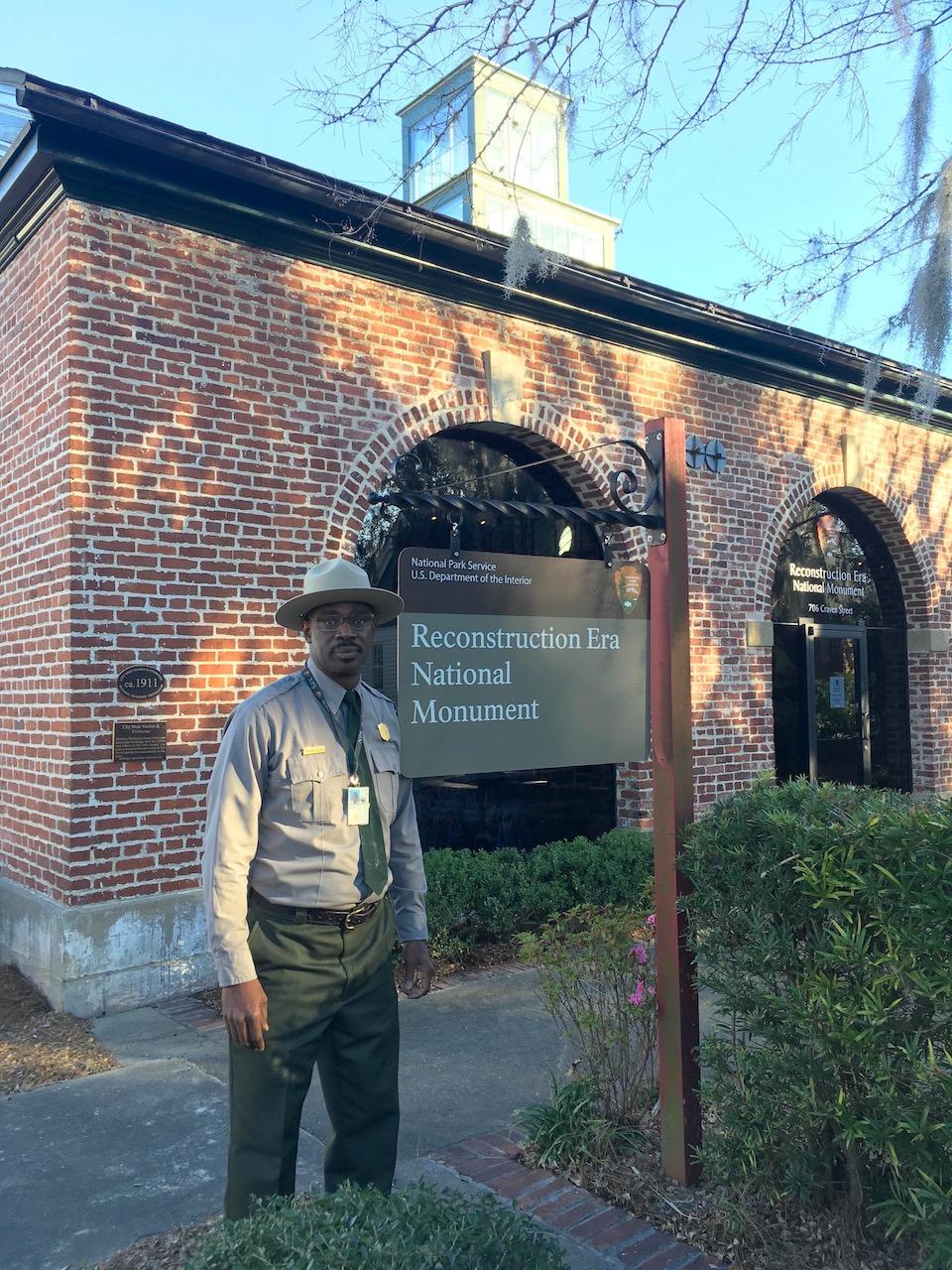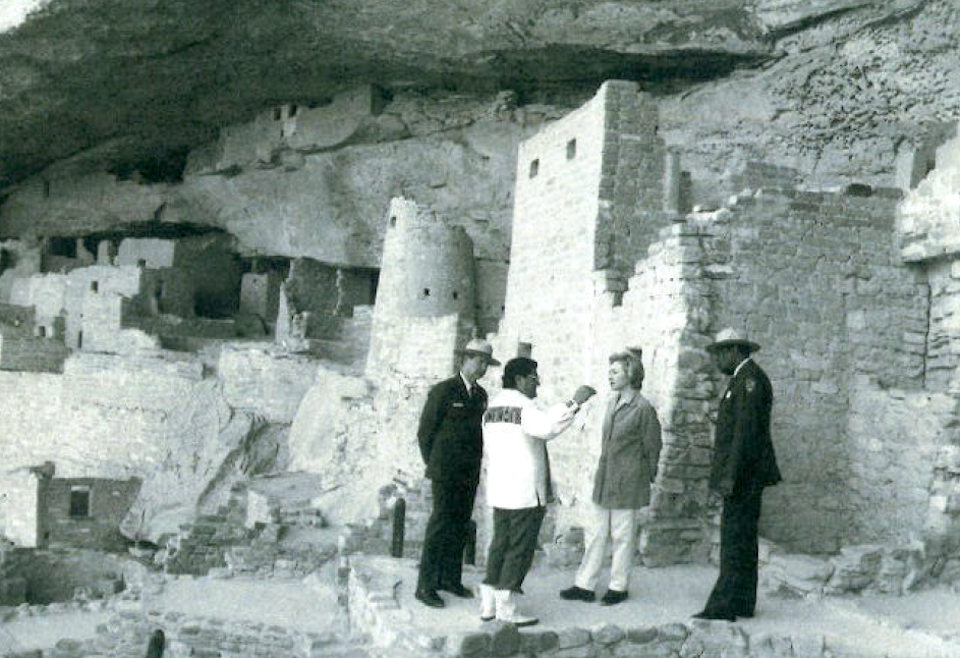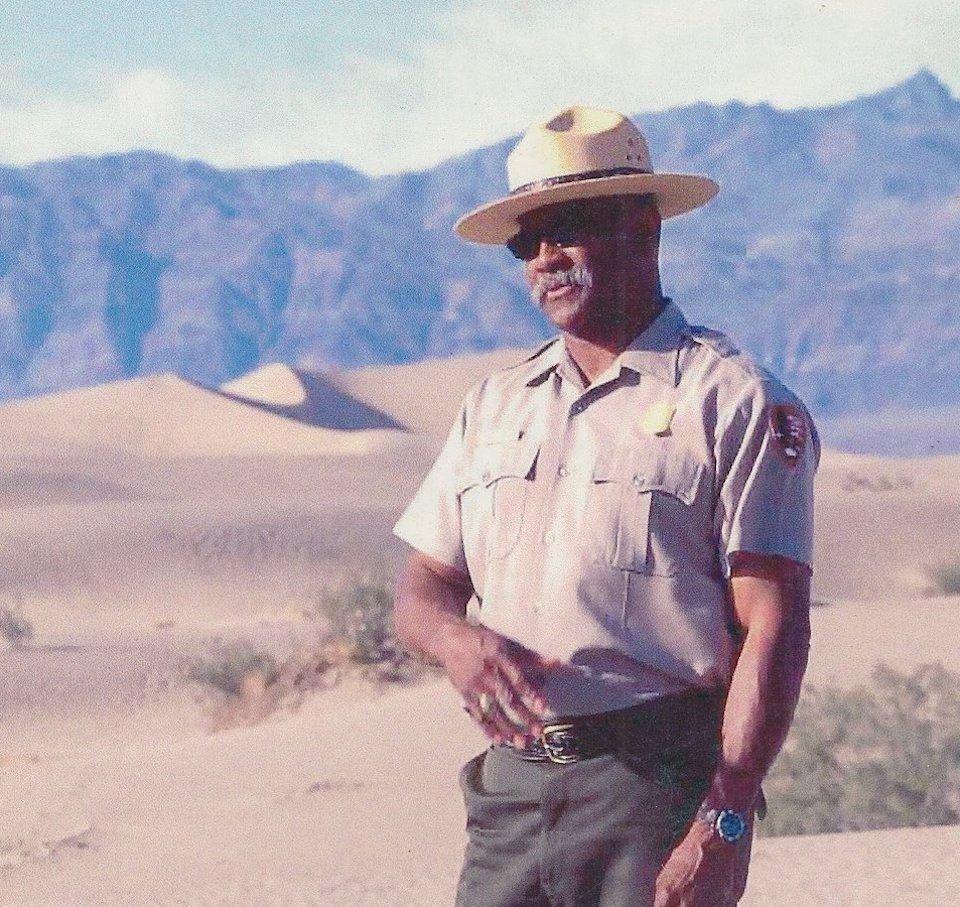
Michael Allen beat the odds and worked for the National Park Service for nearly four decades/Courtesy
Michael Allen joined the National Park Service as a college student recruited in 1980 from South Carolina State University, a public historically Black land-grant institution, to interview people about the history and culture at Fort Moultrie National Historical Park. He climbed the ranks, but not everyone could fathom a Black man as park ranger.
“When people saw me in uniform, they thought I was a game warden, police officer, highway patrolman, security guard – anything but a park ranger. Once they even thought I was the valet to park the car,” he said.
Allen worked for NPS for 37 years, but he is unusual. Despite decades of efforts in Democrat and Republican administrations, there has been little progress in recruiting and retaining a workforce that reflects the increasingly diverse and multi-cultural American public.
Whites account for 79 percent of full-time permanent employees, and 62 percent of all employees are male.
Black employees comprise almost 7 percent of the NPS’s permanent full-time workforce, significantly less than the 13.4 percent of African Americans in the national population. Hispanic employees also are underrepresented, making up 5.6 percent of the Park Service general workforce despite accounting for 18.5 percent of the population. Asian Americans encompass about 2.3 percent of employees compared to 5.9 percent of the national population.
Only Native Americans at 2.5 percent of the workforce exceed their percentage of nationalwide population, which is 1.3 percent.
Beginning with the Kennedy administration just before the Civil Rights Act of 1964, diversifying the workforce has been an NPS objective.
Two years ago the Trump administration distributed an all-employee letter from Daniel P. Smith, at the time the Park Service's acting director. “We will attract, recruit, and retain a diverse workforce that assures our national parks and NPS programs reflect the diversity of America,” he said.
Smith’s statement reiterated support for Director’s Order #16 B: Diversity in the National Park Service that was issued by Jon Jarvis, President Obama's Park Service director, in 2012.
Yet, white males continue to dominate the NPS workforce.
“There has to be persistency and consistency in carrying through the commitment to diversity. It’s not a passive objective,” said Robert Stanton, the 15th Park Service director and the only African American to hold that position. He headed the NPS in the Clinton administration from 1997-2001, capping a 35-year-long career that began as a seasonal employee at Grand Teton National Park when Stewart Udall was Secretary of the Interior.
Stanton was also the agency's first African American superintendent, appointed by George Hartzog, Jr. who was director from 1964-1972. Committed to diversifying the NPS workforce, Hartzog named Stanton superintendent at the National Capital Parks-East region.
It’s difficult to create a diverse workforce for several reasons, including competition, the ability of seasonal employees to slide into permanent positions, and rules set by the Office of Personnel Management, said Phil Francis, chair of the Coalition to Protect America’s National Parks.
Federal laws do not allow the applicant’s race or ethnic origin information to be shared with hiring officials. Even though an applicant is allowed to declare such information, the hiring official is not privy to receive it due to the race-blind approach of the process, said Kathy Kupper, a Park Service public affairs specialist.
Critics cite systemic racism as another reason for the lack of diversity.
James “JT” Reynolds, retired African American superintendent at Death Valley National Park, contends diversity efforts have failed because there are no consequences for managers who “blow off” diversity policies from headquarters.
“Whoever shared the thought that you cannot determine a candidate’s ethnicity, tells me something about the game used to overlook some candidates,” he said.
Over the course of his 38-year-career, Reynolds had opportunities as the selecting official responsible for developing the knowledge, skills, and abilities listed when advertising a vacant position and for reviewing the certification “cert” list -- candidates deemed qualified for the position by the human resources manager.

Bob Stanton, here with then-First Lady Hillary Clinton at Mesa Verde National Park, was both the first Black superintendent in the National Park Service and its first Black director/Courtesy
In his role as superintendent and a selecting official, Reynolds said he could “make a pretty good guess” to determine a candidate’s sex and ethnicity by reading the resume, name of college, spelling of the candidate’s name, and home location, and by calling supervisors and coworkers to learn more about them.
“I am sure the superintendent (if interested in diversity) sees all the names, and knows which candidates are diverse. I know I did,” he said in an email.
Stanton agrees that managers should have an understanding of what is expected of them regarding diversity and inclusion.
“Accountability starts with the director and becomes a shared responsibility up and down the line,” he said.
The National Park Service has recruitment programs that make it easier to get a job; there are “special hiring authorities that sometime permit vacancies to be filled by eligible candidates who qualify based on various elements such as public land corps internships or military service,” said Kupper.
For example, Allen was recruited through a cooperative education program allowing students to combine academic study with practical work experience that can lead to permanent employment. Soon after he was hired, he noticed that African Americans were mostly missing from the history the Park Service told in its exhibits and interpretive programs on Sullivan’s Island in South Carolina. White co-workers questioned his presence, but Allen refused to be intimidated.
“That experience, that journey, and those questions were my foundation to the work, activities, programming and whatever else I did for the next 37 years,” he said.

JT Reynolds rose to superintendent of Death Valley National Park/Courtesy
Over the course of his career, Allen recruited others “but often their experiences were not welcoming or positive,” he said. Allen, who retired in December 2017, suggests the agency talk with former employees and find out why they left the agency, if there’s a sincere interest in retaining people of color.
Another former NPS employee, Nina Roberts, faced years of rejection despite having experience working with parks and conservation organizations and a graduate degree.
“I’m one of many perfectly qualified women of color who applied for NPS jobs for a decade only to be turned down/rejected and in many cases, like mine, not even granted an interview,” she said.
Eventually the biracial woman was hired through a graduate internship program, now called Pathways, and later for a full-time education specialist position. By this time, Roberts was in her 40s.
She encountered some white men who “did not treat me kindly. I think they were threatened,” she said.
Roberts helped create a semester-long paid internship program at Golden Gate National Recreation Area for her students at San Francisco State University, where she is a professor in the Department of Recreation, Parks and Tourism.
“Now working in the halls of higher education, I still push the envelope from the outside. I find a place for students who want to work for the NPS,” she said.
NPS has had more success in establishing park units that speak to the country’s diversity – a goal sought by Hartzog when he was director.
In close to 40 states, the NPS has identified sites that reflect the American Latino heritage. There are more than 70 American Indian and 100 Asian American/Pacific Islander sites listed on NPS’s website.
When Stanton first joined the NPS there were only three units honoring African Americans. Today there are almost 40, along with the National Underground Railroad Network to Freedom.
“President Obama brought in more sites to reflect more fully the face of America,” said Stanton.
The recent additions include Cesar Chavez National Monument in California, Stonewall National Monument in New York, Pullman National Monument in Illinois and Harriet Tubman Underground National Historical Park in Maryland.



Comments
How does having an ethnic diverse workforce help the national parks no where in the article was that explained
Let's just settle down and celebrate, support, and respect our Park Rangers no matter what color. Talent, bravery, and heart are colorblind. The mountains canyons, shores and the rivers don't trifle so why should we? Come on in, all people of all colors!
So, Np person and Tina Dahl, those are your answers at this crucial time, when the majority of literate Americans are overwhelmingly consumed in a transformative review of social relationships and our national approach to diversity? At this time, when all Americans of goodwill are engaged in a search for ways to extend America's historic drive for justice and equality and an end to injustice, you're questioning, Np person, whether equal employment access and civil rights really apply in national parks because the article didn't explain it and, so, maybe they're not really supposed to be a thing in national parks? And, Tina Dahl, you're telling us to "settle down" and, not "trifle" with these topics because mountains don't? That's it? That's all you got?
Np person: that particular article wasn't about _why_, that information is found elsewhere.
Tina: Talent, bravery, and heart may be color-blind, but life experiences and perspectives aren't.
1: Having a more diverse workforce gets additional eyes and perspectives at the table, helping prevent "we didn't know he was a conquistador despised by several local communities, We thought he was just Dora the Exporer". Without ethnic diversity we lose the history of the Buffalo Soldiers in Yosemite and many less glamorous parks in the West and Southwest, and Native Americans in parks not explicitly about the Native American experience.
2: Having a more diverse workforce helps a larger fraction of the American public feel welcome in parks, and feel that parks are part of their legacy for their descendents. Public support for Natinal Parks is still high, but it's slipping.
3: In more technical posiitions where excellence not just competence is important, excluding the best candidates of underrepresented groups means we don't have the overall best staff. If NPS only hires the "best" from the pool of white male scientists or historians or budget analysts or historic preservation specialists, our workforce isn't the best that it can be, and the parks aren't the best that they can be. All but one of my most valuable science colleagues in NPS happen to be female. They couldn't have been my colleagues in the NPS of 20 or 30 years ago. What other even better colleagues, who might do even more than I do to inform park resource management, still are being filtered out and pushed elsewhere?
4: There's also a threshold effect, where being the "one and only" is often untenable. I'm an old white dude, but I'm an observant scientist, and I saw this all along my academic career as women and then minorities slowly trickled into many science departments. Being the first woman, or Hispanic, or Native American, or African American, meant they not only had to prove themselves to their colleagues who _assume_ they aren't as good and are "affirmative action", but they also get a ton of "collateral duties". In academia they became the advisor / mentor to women or brown students and new staff, and got stuck on almost every committee in sight. True story I saw up close: it didn't matter if a brilliant scientist offered the job on his merits (behavioral and immunological aspects of naked mole rats) grew up in a tribe in coastal Washington State, he would have been the sponsor for the Cherokee students (& liason to Cherokee neighbors) despite his culture having very little in common with Cherokee culture. [He took another job offer at a university where he wouldn't be the first native american scientist, and could just be himself,] Similar things happen with collateral duties in NPS.
So that's my perspectives on how NPS as an organization, and Parks as natural and cultural resources for our and all future generations, benefit from a more diverse workforce.
Realistic: please check your math. While "whites" are the largest category in both US population and NPS employment, the percentages _don't_ come close to matching. The argument is how to make the staff diversity better reflect the full diversity of Americans, in positive ways that don't discriminate against anyone, but don't give an additional leg up to the same ol same ol like it does now. NPS, like many private and public entities, falls way short.
I'll just point out that being a four year college graduate isn't necessarily a requirement. I've met a few who I believe applied as veterans - especially as law enforcement rangers. I was chatting it up with Rik Penn (retired now I think) at Golden Gate NRA. I believe he said he worked for the NPS right out of the military, but apparently it was in maintenance first before he became a ranger.
https://www.parksconservancy.org/gateways-article/ranger-rik-penn-his-re...
There is a lot to unpack in this article. My first thought is why is it that other federal agencies don't have an issue with a diverse workforce but the NPS does. The goal it seems to me is to get the best talent, whoever they are, wherever they come from. I am a retired military officer and in the Army it is not uncommon to see from lower ranks to 4 star general of various races, ethnicities, religions, genders, etc. This should be the norm for the NPS. The second point is to know where you are looking for a multi-racial pool of candidates. There are 107 HBCUs most of which have a NPS connection through the Southeat Region Cultural Resources HBCU historic architecture program. Beyond just the HBCUs, there are several recruiting opportunities through football and basketball classics and tournaments, respectively. I am proud NPS employee who happens to be African American. I can from the outside in, as I said as an Army retiree. There is so much talent out here if we choose to go after the talent. Don't talk the talk without walking the walk. Use the military as an example of a talent rich pool of staffers and employees.
Where are the Asian American park rangers, specifically at Yosemite. I just see black or white ones and that is NOT how diversity works. California has a HUGE Asian population and we need to SEE Asian park rangers at CA national parks.